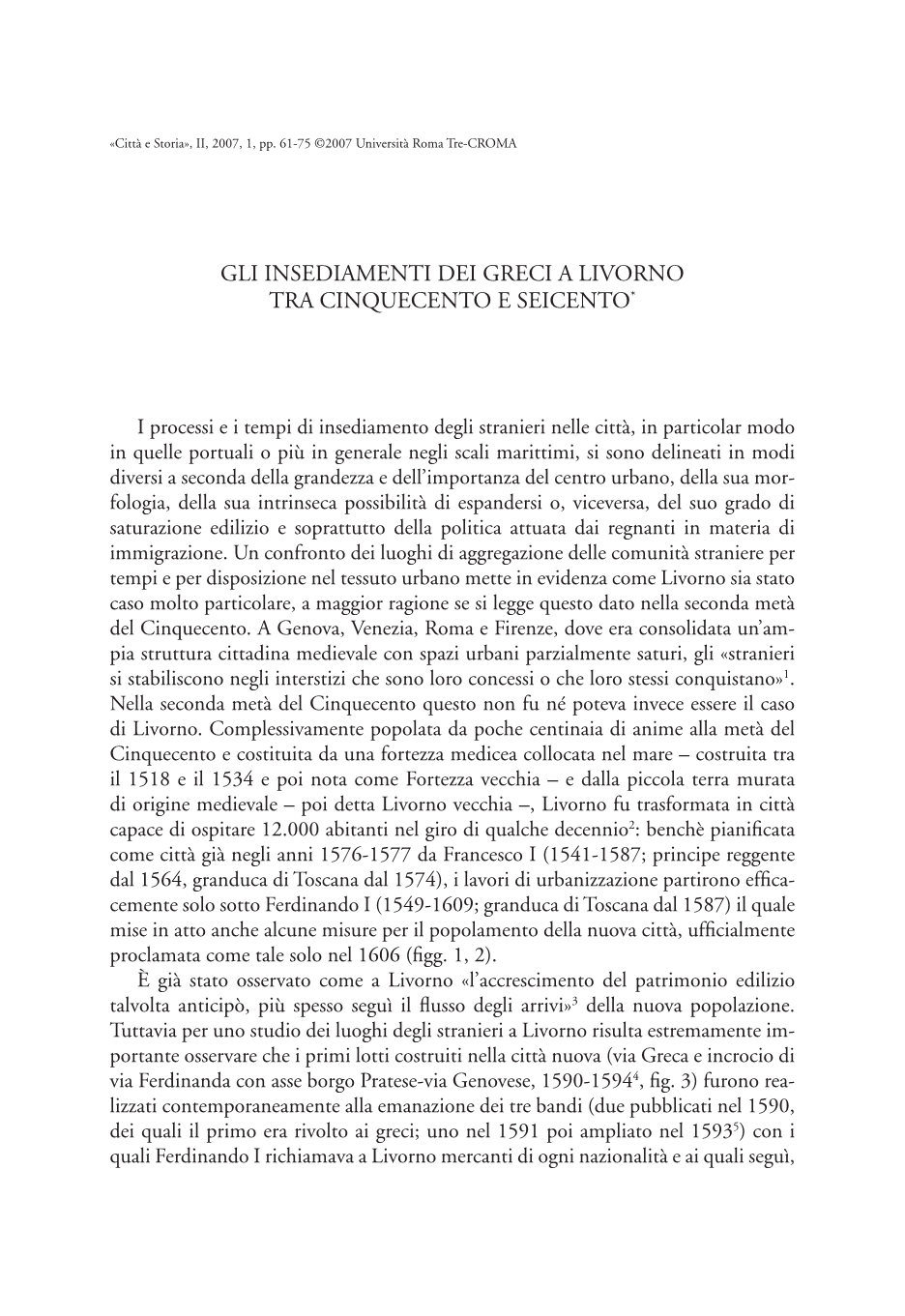Indice degli autori
CITTÀ & STORIA » 2007/1 » La città cosmopolita
ISSN 1828-6364
Funis Francesca
Gli insediamenti dei greci a Livorno tra Cinquecento e Seicento
pp.61-75, DOI 10.17426/61255
Articoli
Abstract: During the urbanization process of Livorno, which began in 1576, two phases marked the Greek settlement in the city. The former Augustinian hermitage of San Jacopo in Acquaviva, located near an isolated cove about a mile south of Livorno, functioned as a Greek church as early as 1568. Rather than being a center of aggregation for the Greek community, San Jacopo was instead intended to attract Greeks to reside permanently in Livorno. The earliest Greek settlement in Livorno dates back to 1592. Contrary to the seventeenth-century chronicles, this village was not close to San Jacopo, but was located near the wet dock, inside the new blocks of Livorno Nuova. The second phase was constituted by the construction of the Santissima Annunziata dei Greci in 1606, around which the Greek community formed a real neighborhood. This essay examines the following issues: the arrangement and distribution of the Greek houses within the civic center (which was then under construction); the building typology of these houses; and the degree to which the Greek population was able to intervene on and modify the existing urban fabric planned by the Medicean engineers and architects.

Referenze
- download: n.d.
- Url: http://archivio.centroricercheroma.it/?contenuto=indice-degli-autori&idarticolo=743
- DOI: 10.17426/61255
- citazione: F. Funis, Gli insediamenti dei greci a Livorno tra Cinquecento e Seicento, "Città & Storia", II/1, pp.61-75, DOI: 10.17426/61255

